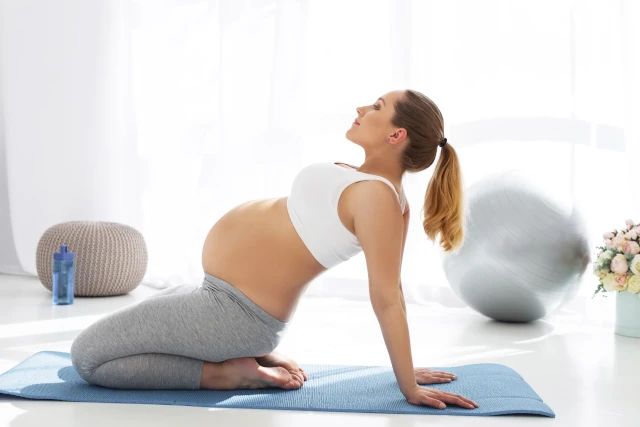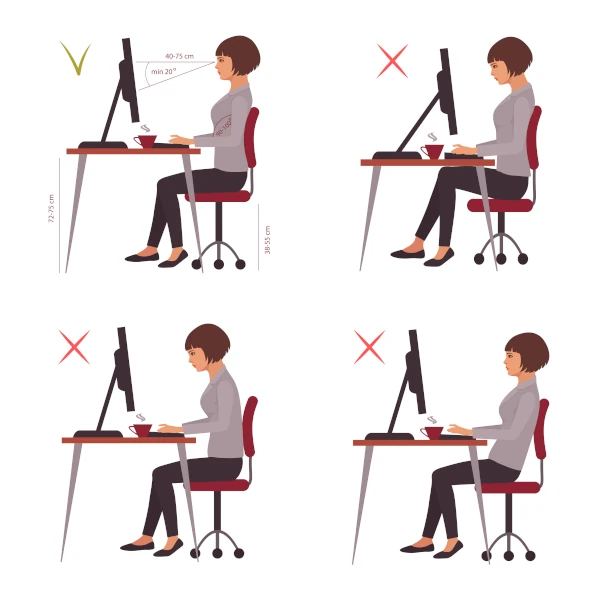
Top 10 Prenatal Exercise Tips for a Healthy Pregnancy
- Dr. Deepika Rai (MPT)
Connect with our expert physiotherapist for personalized physiotherapy advice.
Exercising during pregnancy has incredible benefits, from boosting mood and energy to supporting a smoother labor and recovery. But staying active while pregnant also requires extra care to ensure safety for both you and your baby. If you are looking to stay fit while expecting, here are ten expert-backed tips to help you make the most of your prenatal workouts.
- Get the Green Light from Your Doctor
Before starting or continuing any exercise routine during pregnancy, consult your healthcare provider. They can offer personalized advice based on your health and pregnancy stage, especially if you have any high-risk factors.
- Choose Pregnancy-Safe Exercises
While some workouts might need modification, there are plenty of safe and beneficial activities for pregnancy:
- Walking:
Great for cardiovascular health.
- Swimming:
Reduces joint stress and provides full-body engagement.
- Prenatal Yoga:
Increases flexibility and reduces stress.
- Light Strength Training:
Helps prepare muscles for labor.
These exercises support overall health without placing too much strain on your body.
- Walking:
- Focus on Core and Pelvic Floor Exercises
Strengthening your core and pelvic floor can help support your growing baby and reduce common pregnancy discomforts, like back pain. Plus, a strong pelvic floor aids in smoother labor and recovery.
- Safe Core Exercises:
Try pelvic tilts and modified planks.
- Pelvic Floor Strengthening:
Kegels are especially beneficial.
- Safe Core Exercises:
- Stay Hydrated
Pregnancy increases your body’s need for water, especially when you exercise. Proper hydration helps maintain amniotic fluid levels, reduces the risk of overheating, and supports blood flow.
Tip: Aim to drink water before, during, and after exercise. Carry a bottle with you as a reminder.
- Listen to Your Body
Your body will naturally tell you if something feels wrong. Respect its signals, and avoid pushing yourself too hard. Pregnancy isn’t the time for intense workouts, personal bests, or strenuous exercises that cause pain or discomfort.
- Avoid High-Impact and High-Risk Activities
Certain activities can be too risky or intense during pregnancy. Exercises to avoid include:
High-impact aerobics or anything with lots of bouncing.
Contact sports like basketball or soccer.
Exercises that require lying flat on your back after the first trimester, which can restrict blood flow.
Instead, stick to low- to moderate-impact activities.
- Warm Up and Cool Down
Warming up preps your muscles for exercise and reduces the risk of strains, while cooling down prevents blood from pooling in your legs and helps your heart rate return to normal. Both are especially important during pregnancy to avoid dizziness and discomfort.
Tip: A five-minute walk or gentle stretches make for a great warm-up and cool-down.
- Invest in Supportive Activewear
Comfortable, well-fitted activewear can make a big difference when exercising during pregnancy. Look for:
Supportive sports bras to reduce breast discomfort.
High-waisted maternity leggings to support your bump.
Proper footwear that offers stability and cushioning.
These small adjustments can make your workout more comfortable and enjoyable.
- Modify Your Workouts as Needed
As your pregnancy progresses, you may need to adjust your workouts. Activities that felt easy in the first trimester might need modification in the second and third.
Example: Replace jogging with walking or reduce weights as your center of gravity shifts.
Modifying exercises keeps workouts safe and sustainable throughout pregnancy.
- Prioritize Rest and Recovery
Your body is already working hard to grow and nourish your baby, so adequate rest is essential. Balance your workouts with relaxation to avoid fatigue and overexertion.
Tip: Try incorporating rest days or gentle stretching into your weekly routine. This gives muscles time to recover and prevents burnout.
Benefits of Exercising During Pregnancy
The benefits of prenatal exercise are well-documented and go beyond physical health. Here are just a few of the positive effects of staying active while pregnant:
- Reduces Pregnancy Discomforts:
Staying active can relieve common issues like back pain, swelling, and constipation.
- Boosts Mood and Energy Levels:
Exercise releases endorphins, which can help alleviate mood swings and fatigue.
- Promotes Better Sleep:
Regular activity can help regulate sleep patterns, making it easier to rest.
- Prepares You for Labor:
Improved strength and stamina make a difference when it’s time to bring your baby into the world.
- Supports Faster Postpartum Recovery:
Maintaining fitness during pregnancy helps your body bounce back more quickly.
Final Thoughts on Staying Active During Pregnancy
Staying active during pregnancy can contribute to a healthier, more comfortable experience. However, each pregnancy is unique, so prioritize safety and choose exercises that feel good for your body. These top 10 tips will help you maintain a fitness routine that supports your health and well-being throughout this special journey.Embrace movement, stay hydrated, and most importantly—listen to your body!
Connect with our expert physiotherapist for personalized physiotherapy advice.



